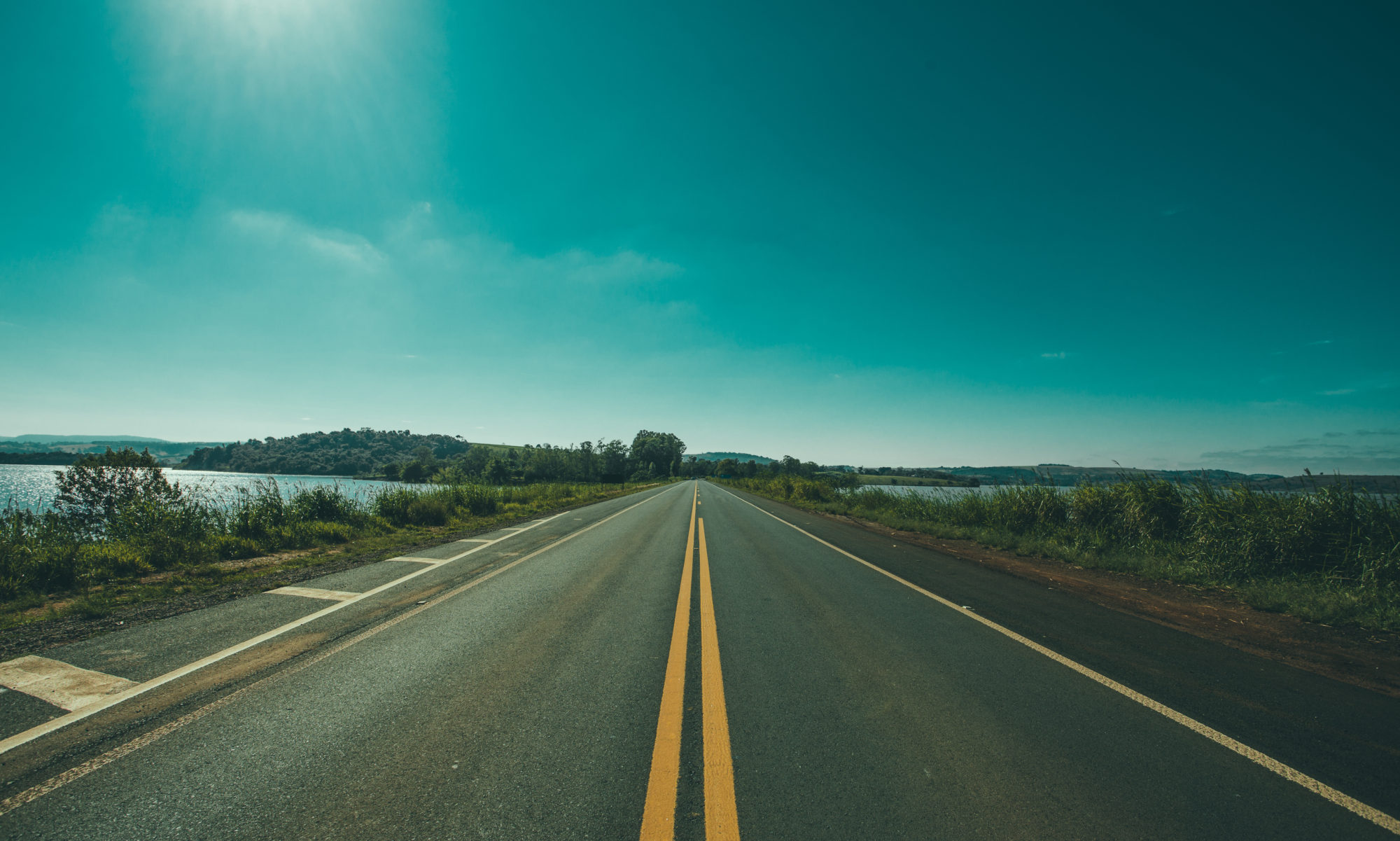We head for Ballito, a ritzy community about 40 KMs east of Durban.
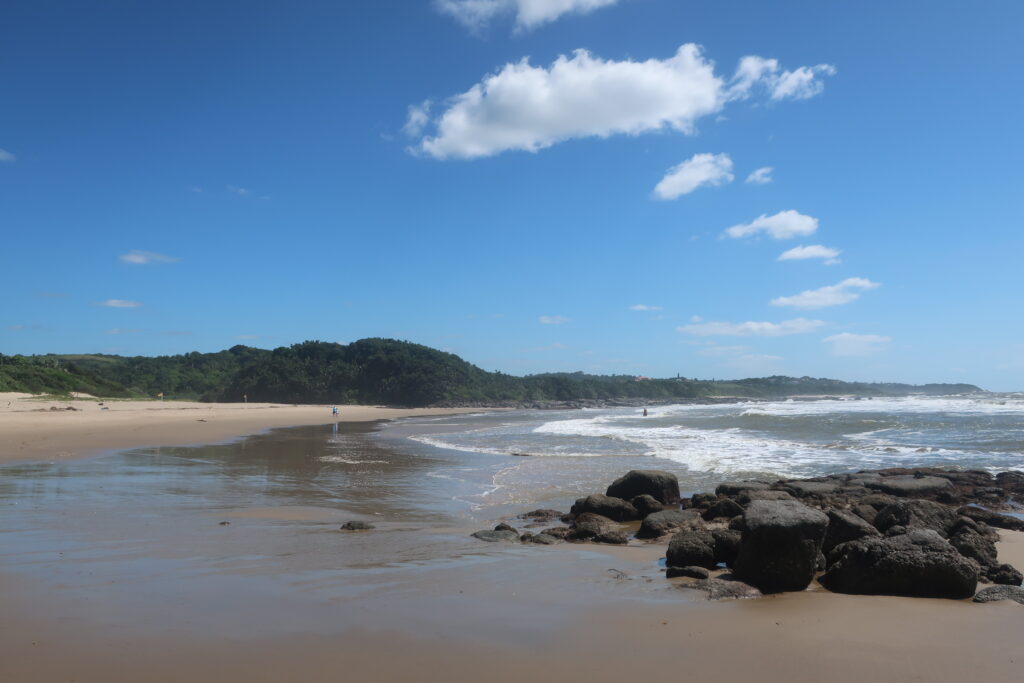
It’s very pleasant here. We stay for three days. Maria arranges to attend a yoga class at the exclusive Simbithi Country Club.
Then it’s back down the slab, through Durban to the Wild Coast.
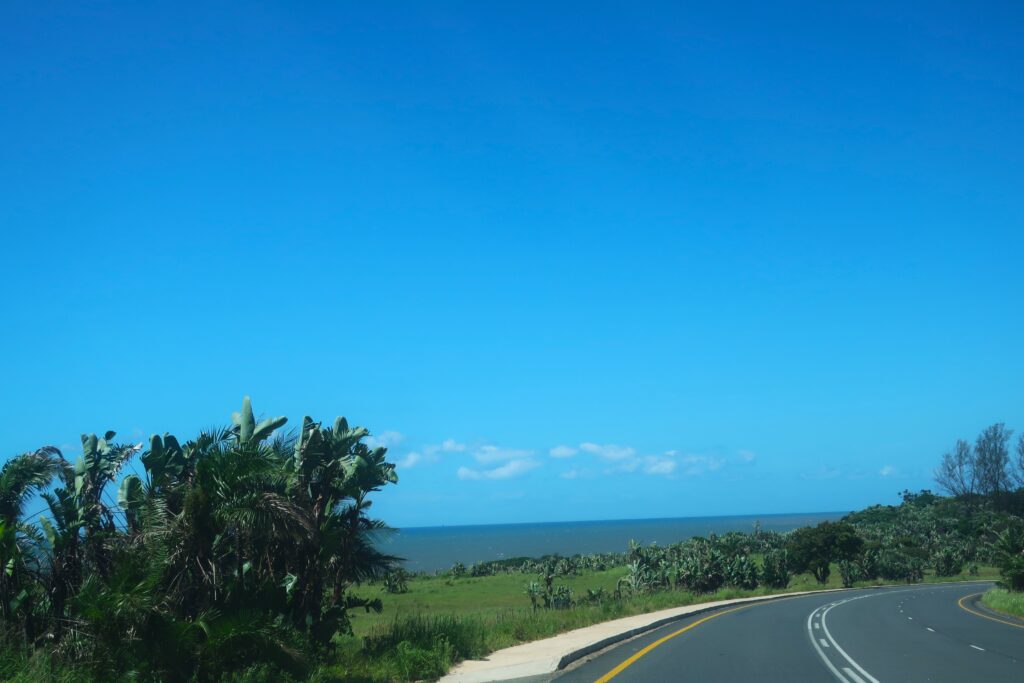
This lies mainly in territory that used to be the apartheid-era homeland of Transkei.
The apartheid government probably meant to create this as a dumping ground for unwanted South Africans. But at least visually, it’s very pretty. Lots of green hills and empty spaces. Good for sheep and cattle.
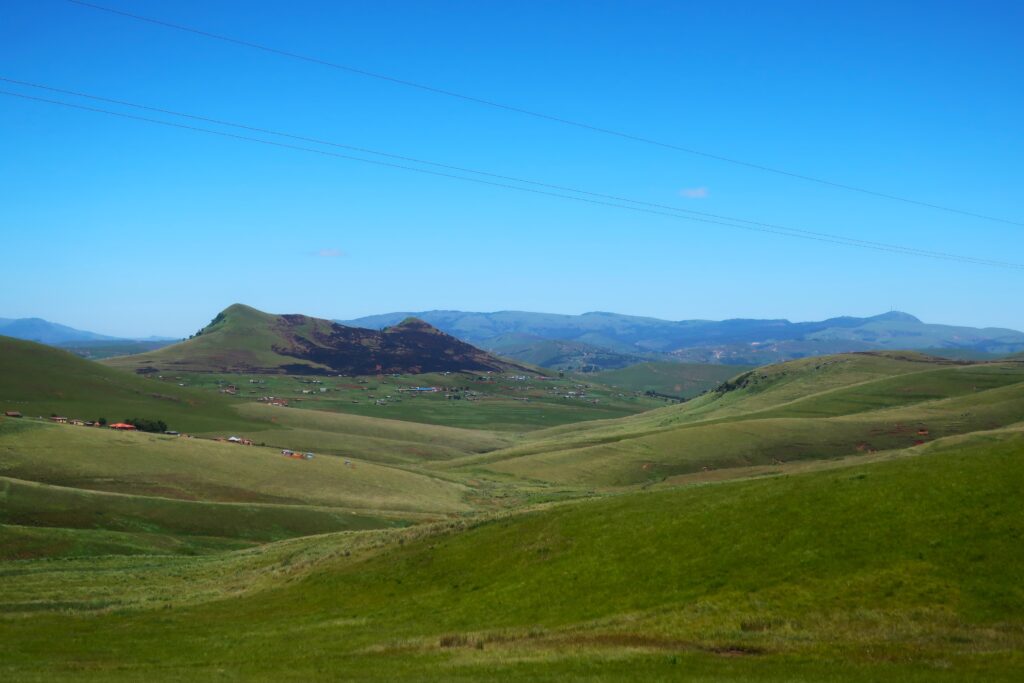
Most people live in typical rural settlements. They’re picturesque, if not exactly luxurious.
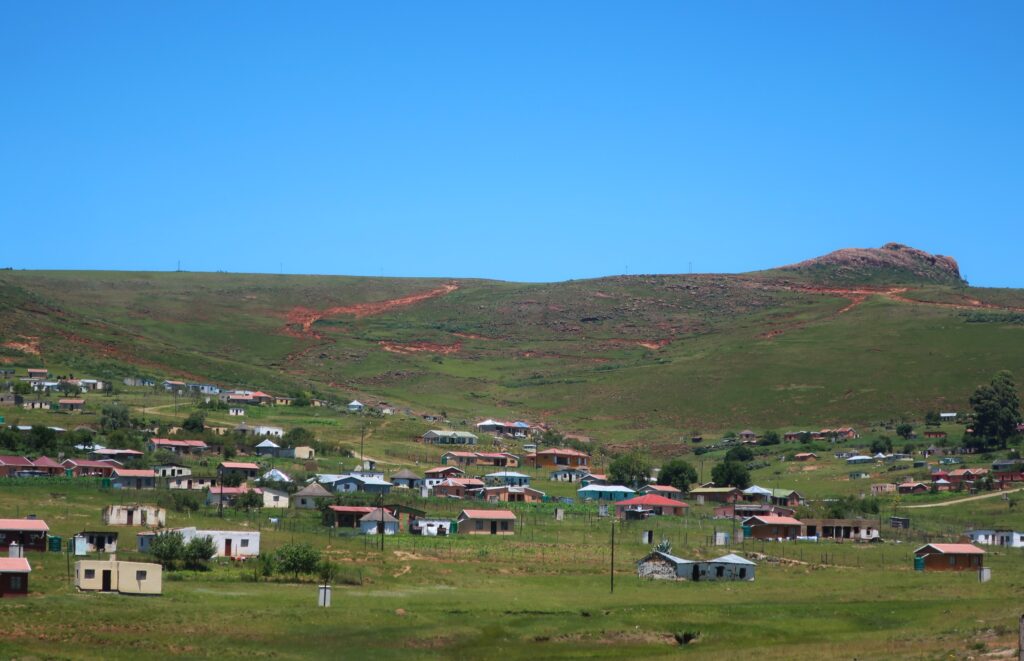
The few cities in the area, such as Mththa and Dutywa, are pretty awful, like most African cities. (Dutywa, aptly enough, means “place of disorder” in the Xhosa language.)
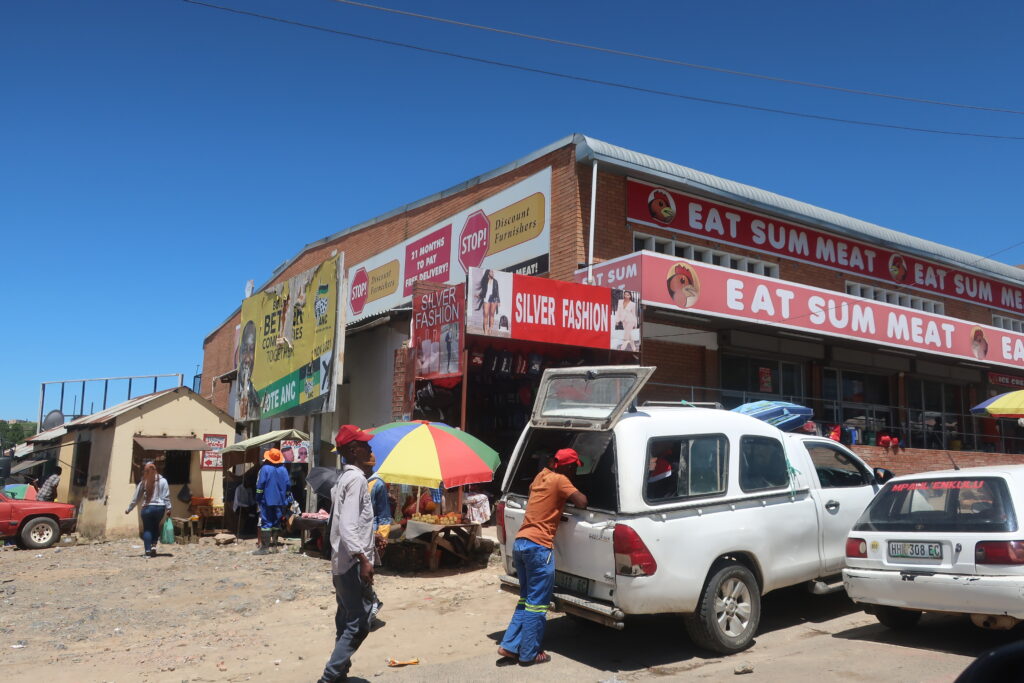
Lots of garbage, noise, and chaos. Lots of idle, drunken guys at 10 in the morning. Lots of crumbling buildings. We don’t linger.
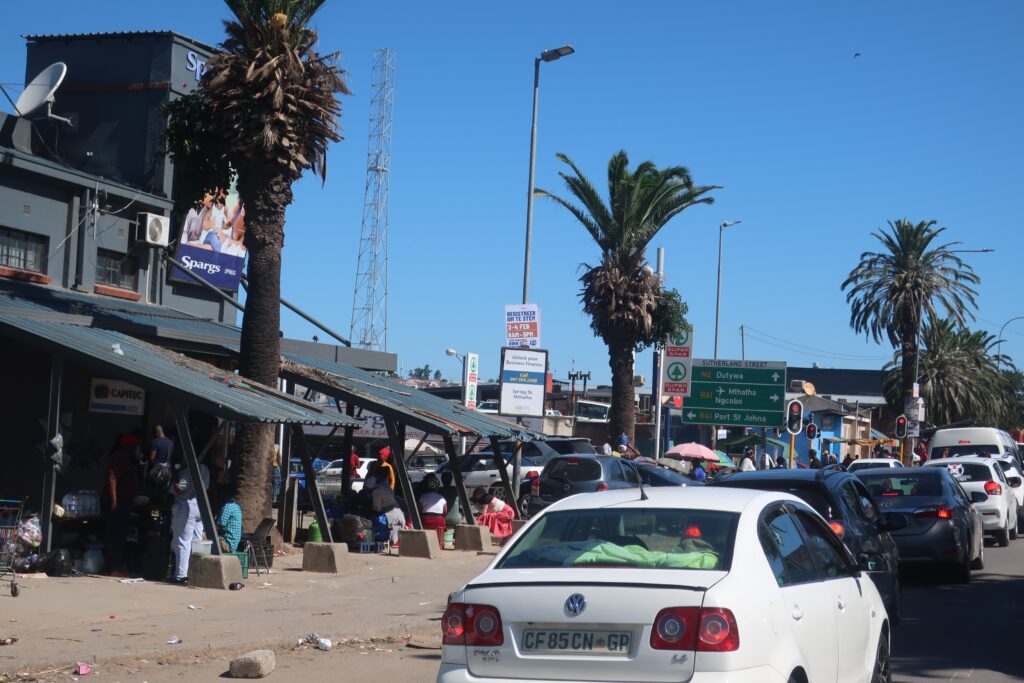
It’s a relief to be back in the countryside. Nelson Mandela was born around here somewhere.
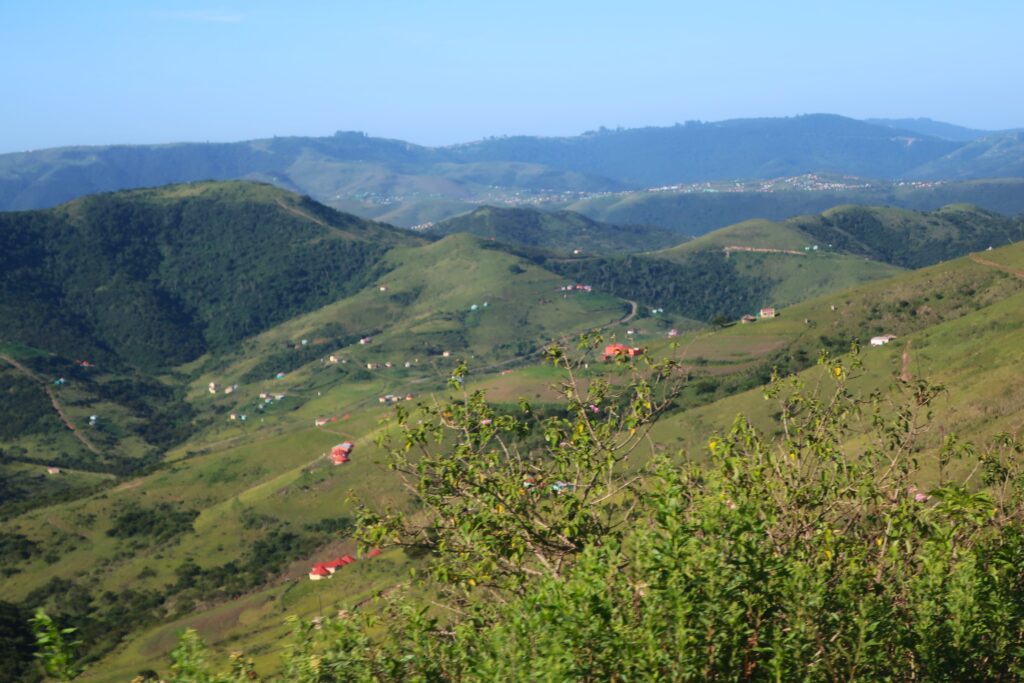
Many people paint their houses in pastel colours.
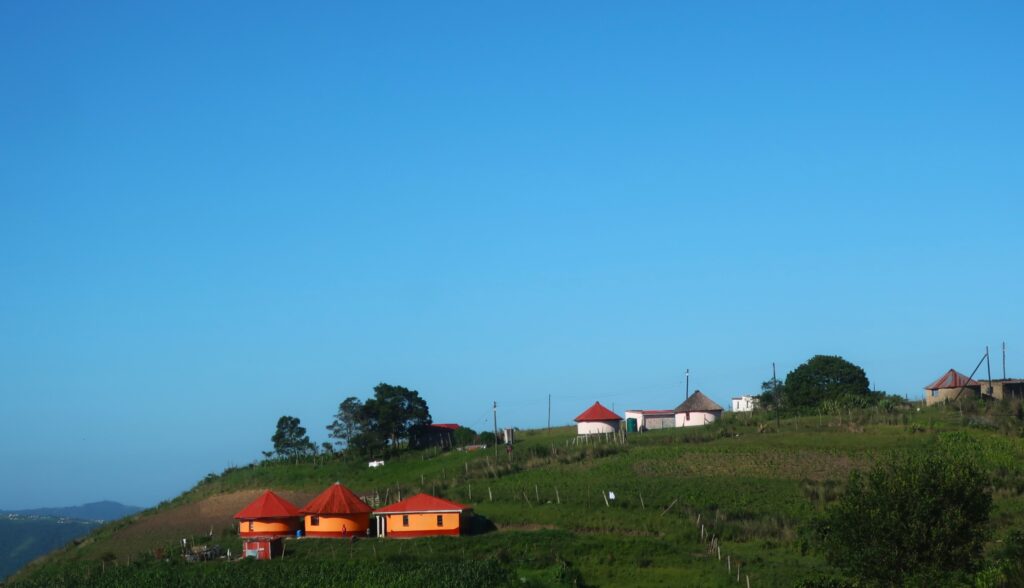
One theory we have about the origins of the name “Wild Coast”: the sea is very rough in these parts. The roar of waves crashing on the rocky shore is our soundtrack for the next five days or so.
We spend three of those days at the Coffee Bay Campsite, set in lush indigenous forest, with a private beach. Sort of. Locals seem to to wander through at will and at all hours.
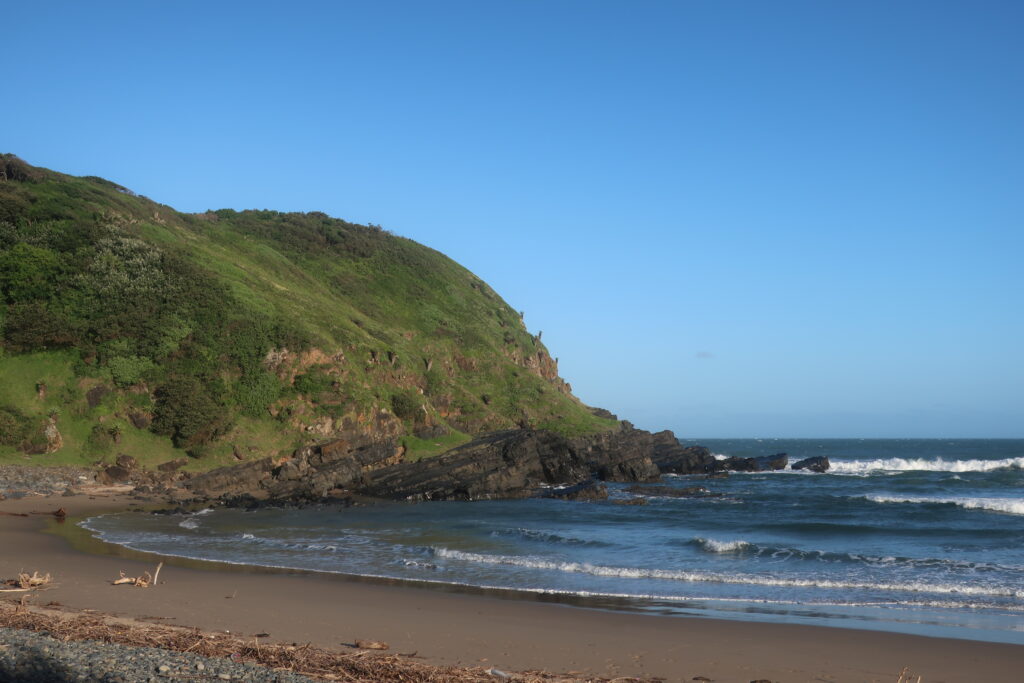
Our constant companion is Frisky. (Pronounced “Frrrrisky”, with a heavily-rolled Afrikaans R.)
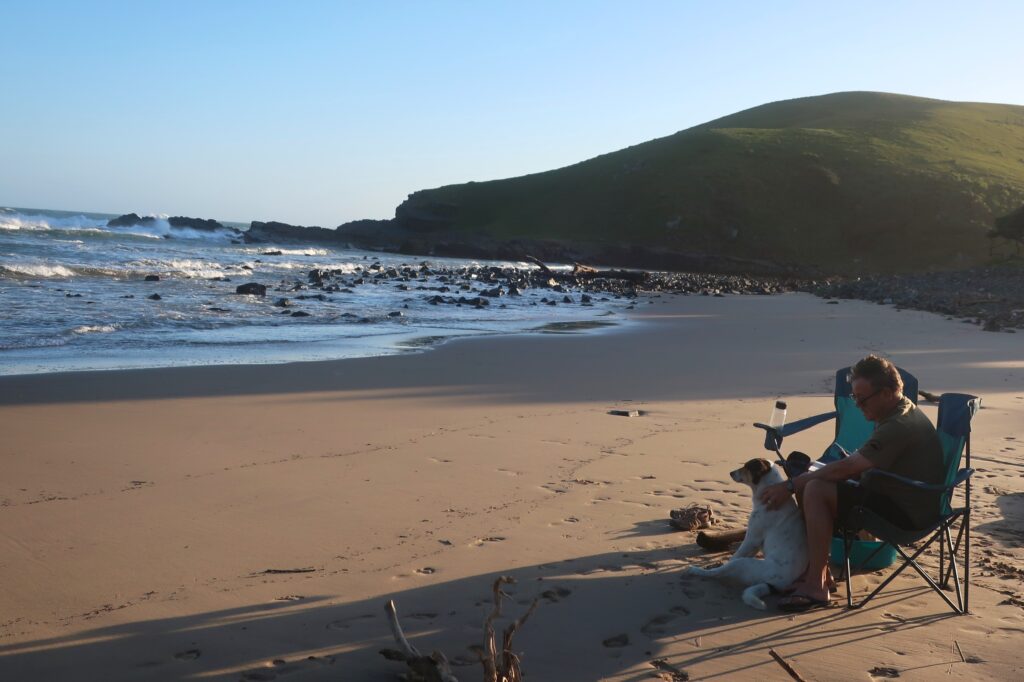
At night, he sleeps near our tent. During the day he sleeps, well, just about anywhere. As long as he’s around us.
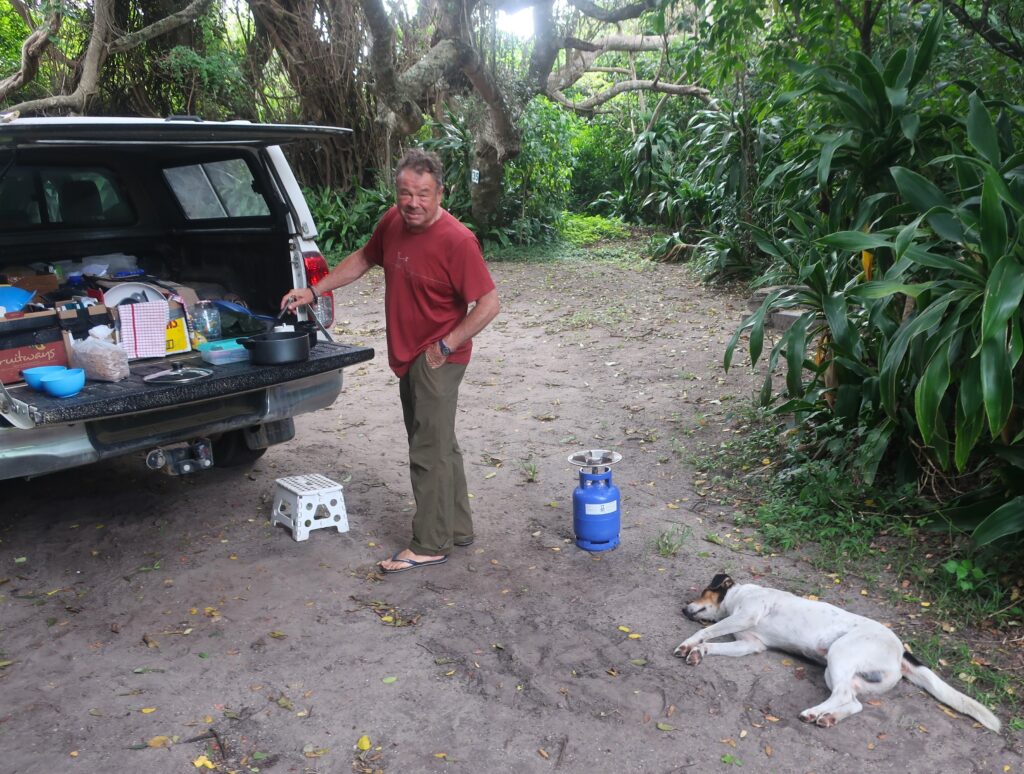
He’s such a well-behaved dog. If we could, we’d bring him home and adopt him.
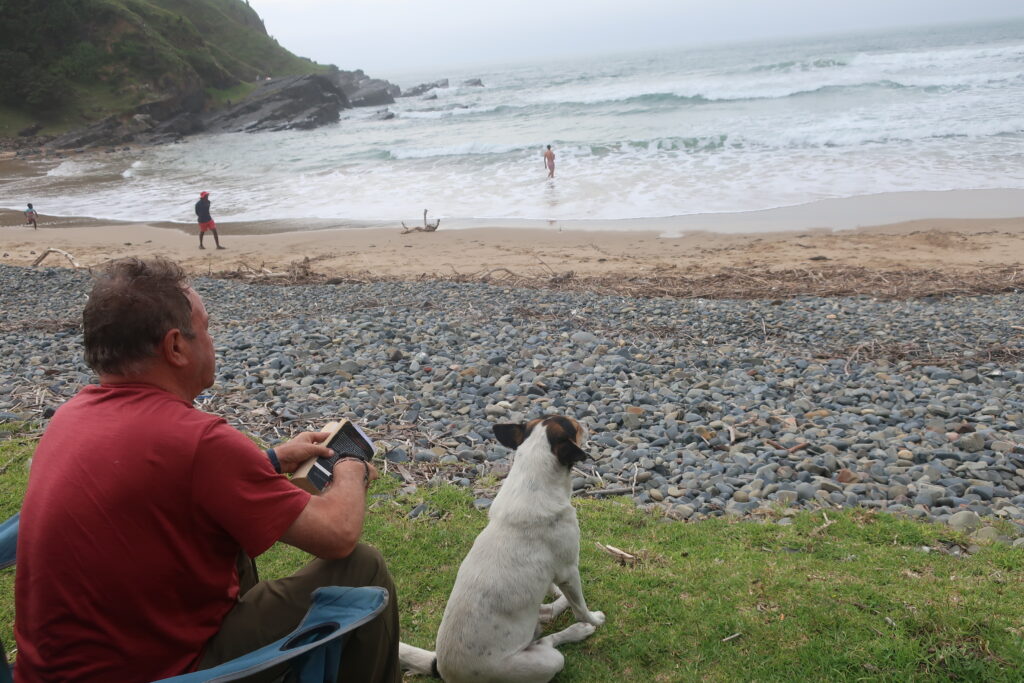
(Sidebar story about adopting dogs: The Economist recently published a story about people in India going ga-ga over dogs as pets. We find it surprising that in an article describing how people are opting for Lhasa Apsos and other ‘pure’ breeds, there is no mention whatsoever of the estimated sixty-two million stray dogs in the country. These are the most wretched, miserable, diseased and cruelly-used creatures imaginable.
Then I realized – the author is probably an Indian national. We find that people who live in developing countries are oblivious to the everyday horrors that surround them. And it seems impolite to point them out.)
We drive to a local attraction, Hole-in-the Wall. We plan to hike there, but are surrounded by touts that just will not leave us alone. They claim we need a ”guide”.
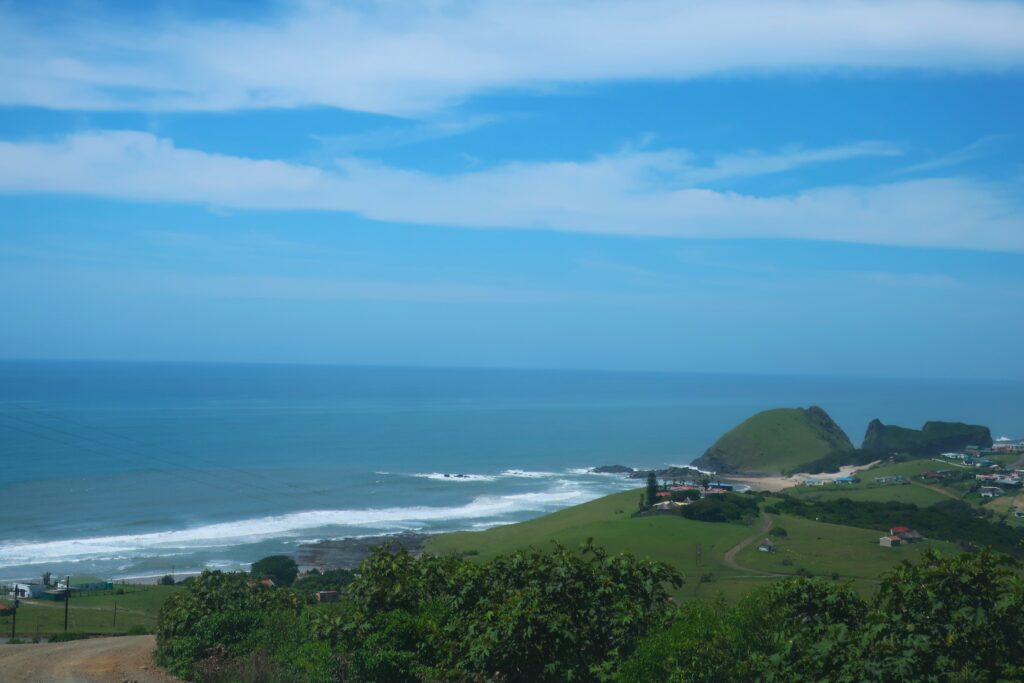
So we go home again, with the Hole-in-the-Wall unseen. Next day, we drive into the nearest village to have one of our tires looked at.
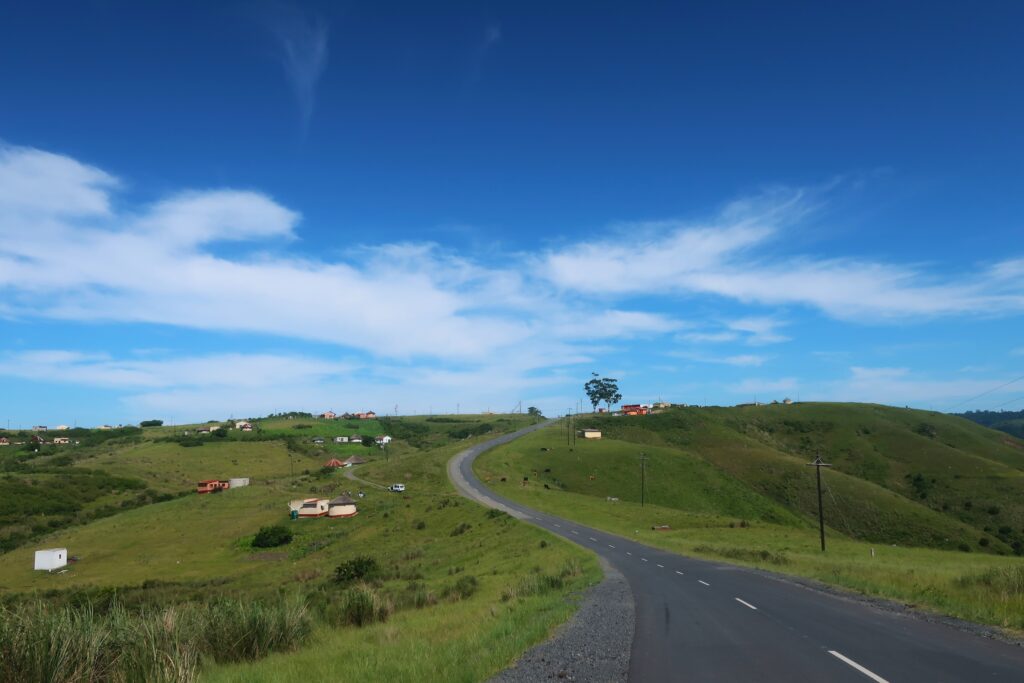
The tire guy removes the tire, tests it for leaks, and puts it back on. The charge is 50 rand, or $3.59 CAD.
Sight or Insight of the Day
Hey, we forgot to mention something that happened in Botswana. In a previous entry, we mentioned a pair of Finnish women we met in Cape Maclear in Malawi.
While making a brief stop in a mini-mall in Kasane, Botswana, who do we see in the parking lot in their snazzy Land Rover? The Finnish pair! They had spent the intervening month or so traveling around Malawi and Zambia and were on their way to Namibia. We chat for five minutes and part ways again.
What are the odds that two parties, following completely different (and random) itineraries, encounter each other in the vastness of Africa? It was a kind of “Livingstone, I presume” moment.
After we first met them, they often came up in our conversation – their fearlessness, their completely realistic and un-romanticised approach to traveling in Africa, their tutoring us in the best way to repel monkeys. (One word: slingshots.)
